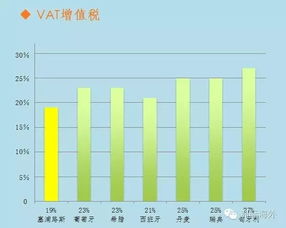房产证上分摊建筑面积是什么意思
- 房百科
- 2024-05-20
- 999
Title: Understanding Property Tax Allocation
Property tax allocation can vary depending on numerous factors, including location, property type, and local regulations. Let's delve into how property taxes are typically apportioned:
1. Property Value Assessment:
Property tax is often based on the assessed value of the property. Municipal assessors evaluate properties periodically to determine their value. This assessment considers factors like the property's size, location, amenities, and recent sale prices of similar properties in the area.
2. Tax Rate Determination:
Once the assessed value is established, local authorities set a tax rate. This rate is usually expressed in terms of "mills," with one mill representing $1 of tax per $1,000 of assessed value. The tax rate can vary depending on the municipality and its budgetary requirements.
3. Tax Calculation:
To calculate property tax, multiply the assessed value of the property by the tax rate. For example, if a property is assessed at $200,000 and the tax rate is 10 mills, the annual property tax would be $2,000 (200 * 10).
4. Allocation Methods:
Individual Property Owners:
In scenarios where a property is owned by a single entity, that entity is typically responsible for paying the entire property tax bill.
MultiTenant Properties (e.g., Apartments, Condos):
For properties with multiple units or tenants, the property tax burden is often distributed among the occupants. This distribution can be based on various factors:
Square Footage:
One method is to allocate taxes based on the square footage of each unit. Larger units would incur higher tax contributions.
Unit Value:
Alternatively, taxes may be allocated according to the assessed value of each unit. Highervalued units would pay more in taxes.
Equal Division:
Some arrangements involve dividing the total tax bill equally among all units, regardless of size or value.
Proportionate Share:
Taxes can also be divided based on the percentage of space occupied by each unit relative to the total property space.5. Legal Agreements and Regulations:
The allocation method is often outlined in legal agreements such as leases or condominium association bylaws. These documents may specify how property taxes are divided among tenants or unit owners.
Local regulations may also impose requirements or restrictions on property tax allocation methods, particularly for certain types of properties like condominiums or rental units.
6. Importance of Clarity and Fairness:
Clear communication and transparency regarding the allocation of property taxes are crucial to avoiding disputes among property owners or tenants.

Fairness is essential in determining tax allocation methods. Property owners or tenants should feel that the distribution accurately reflects their usage or benefit from the property.
7. Consultation and Professional Advice:
Property owners, landlords, and tenants can benefit from consulting legal and financial professionals to ensure compliance with local regulations and to optimize tax allocation strategies.
Real estate professionals, such as property managers or tax advisors, can provide valuable insights and guidance tailored to specific circumstances.
In summary, property tax allocation involves assessing the value of the property, determining the tax rate, and distributing the tax burden among property owners or tenants based on various methods. Clarity, fairness, and compliance with legal regulations are essential aspects of effective property tax allocation strategies.
Understanding Property Tax Allocation
Property tax allocation can vary depending on numerous factors, including location, property type, and local regulations. Let's delve into how property taxes are typically apportioned:
Property tax is often based on the assessed value of the property. Municipal assessors evaluate properties periodically to determine their value. This assessment considers factors like the property's size, location, amenities, and recent sale prices of similar properties in the area.
Once the assessed value is established, local authorities set a tax rate. This rate is usually expressed in terms of "mills," with one mill representing $1 of tax per $1,000 of assessed value. The tax rate can vary depending on the municipality and its budgetary requirements.
To calculate property tax, multiply the assessed value of the property by the tax rate. For example, if a property is assessed at $200,000 and the tax rate is 10 mills, the annual property tax would be $2,000 (200 * 10).
Individual Property Owners: In scenarios where a property is owned by a single entity, that entity is typically responsible for paying the entire property tax bill.
MultiTenant Properties (e.g., Apartments, Condos): For properties with multiple units or tenants, the property tax burden is often distributed among the occupants. This distribution can be based on various factors:
- Square Footage: One method is to allocate taxes based on the square footage of each unit. Larger units would incur higher tax contributions.
- Unit Value: Alternatively, taxes may be allocated according to the assessed value of each unit. Highervalued units would pay more in taxes.
- Equal Division: Some arrangements involve dividing the total tax bill equally among all units, regardless of size or value.
- Proportionate Share: Taxes can also be divided based on the percentage of space occupied by each unit relative to the total property space.
The allocation method is often outlined in legal agreements such as leases or condominium association bylaws. These documents may specify how property taxes are divided among tenants or unit owners.
Local regulations may also impose requirements or restrictions on property tax allocation methods, particularly for certain types of properties like condominiums or rental units.
Clear communication and transparency regarding the allocation of property taxes are crucial to avoiding disputes among property owners or tenants.
Fairness is essential in determining tax allocation methods. Property owners or tenants should feel that the distribution accurately reflects their usage or benefit from the property.
Property owners, landlords, and tenants can benefit from consulting legal and financial professionals to ensure compliance with local regulations and to optimize tax allocation strategies.
Real estate professionals, such as property managers or tax advisors, can provide valuable insights and guidance tailored to specific circumstances.
In summary, property tax allocation involves assessing the value of the property, determining the tax rate, and distributing the tax burden among property owners or tenants based on various methods. Clarity,
上一篇
五一期间江西旅游收入
下一篇
土耳其自由行旅游攻略













